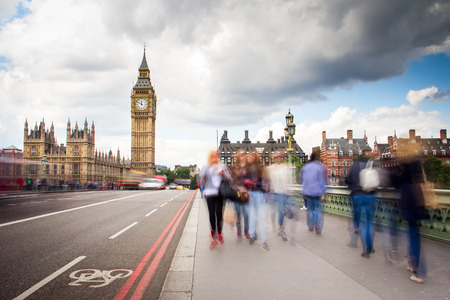1. Introduction
Across Britain, the landscapes of cities, towns, and countryside are as diverse as the people who call them home. For individuals who rely on mobility aids—such as wheelchairs, walking frames, or canes—navigating these environments can present unique challenges. Adapting both urban and rural settings to better accommodate mobility aid users is not just about meeting legal requirements; it’s a vital step towards fostering inclusivity and dignity for all. Thoughtful environmental adaptations, from accessible pavements in bustling city centres to well-maintained pathways in tranquil villages, play a gentle yet powerful role in enhancing daily life. These improvements allow everyone to participate more fully in their communities, enjoy greater independence, and experience the rich tapestry of British life without unnecessary barriers. As we explore how our environments can be shaped to support mobility aid users, we also discover the positive ripple effects such changes bring—not only to individuals but to society as a whole.
Urban Adaptations: Enhancing City Accessibility
In the heart of Britain’s bustling towns and cities, ensuring that urban environments are welcoming and accessible for mobility aid users is a fundamental part of inclusive community living. Modern city-centre solutions have evolved to address these needs, offering practical adaptations and thoughtful design to make daily journeys smoother for everyone, regardless of their mobility challenges.
Step-Free Access in Public Spaces
One of the most significant advances in British urban planning is the prioritisation of step-free access. Increasing numbers of shops, transport hubs, and public buildings have embraced ramps, lifts, and level entrances as standard features. These modifications allow wheelchair users, those with rollators, or individuals with walking frames to move independently and confidently through city centres.
Tactile Paving: Guiding the Way
Tactile paving has become a familiar sight on pavements and crossings throughout the UK. These textured ground surfaces provide vital sensory cues for people who are visually impaired, helping them navigate safely and independently. For mobility aid users, tactile paving also indicates areas where kerbs drop or crossings begin—reducing trip hazards and offering reassurance along busy routes.
Accessible Public Transport Solutions
British cities are making strides in accessible public transport. Buses with low floors and designated wheelchair spaces, as well as trains with boarding ramps and step-free platforms, support seamless travel across the urban landscape. Staff training in disability awareness further enhances the passenger experience by ensuring help is available when needed.
Key Urban Adaptations in British Cities
| Adaptation | Description | Benefit to Mobility Aid Users |
|---|---|---|
| Step-Free Entrances | No steps at building entry points; often includes ramps or lifts | Easier independent access to shops, stations, public venues |
| Tactile Paving | Textured surfaces at crossings/pavements | Guidance for visually impaired; safer navigation for all users |
| Dropped Kerbs | Pavement edges lowered at crossing points | Smoother transition for wheelchairs/rollators; reduced risk of falls |
| Accessible Transport Vehicles | Buses/trains with low floors, ramps, dedicated spaces | Inclusive travel options; improved independence and confidence |
The Importance of Community Engagement
Continued improvements rely on feedback from those who use mobility aids every day. Local councils and advocacy groups across Britain are increasingly inviting input from residents to ensure urban adaptations truly meet their needs. By nurturing this dialogue and fostering understanding, British cities are becoming more welcoming places—where everyone can enjoy city life without barriers.

3. Rural Challenges and Solutions
For mobility aid users, living in rural Britain often presents a unique set of challenges. Unlike urban areas where amenities and public transport are more readily available, the countryside can pose obstacles such as uneven paths, limited accessibility to essential services, and infrequent transport links. These factors can make independent living and community participation more difficult for those who rely on wheelchairs, walking frames, or scooters.
Uneven Terrain and Accessibility
Rural landscapes are renowned for their natural beauty, but this often comes with hilly ground, gravel tracks, and narrow lanes that can be tough to navigate. Many villages still have cobbled high streets or older buildings with steps and narrow doorways. Local authorities and charities have begun working together to improve pathways by installing ramps, widening pavements where possible, and ensuring that signage is clear and helpful for all residents.
Transport Limitations
The lack of frequent public transport is a major barrier for rural mobility aid users. Community-run minibus schemes and accessible taxi services are gradually being introduced in some regions, providing vital connections to medical appointments, shops, and social events. Some counties also offer dial-a-ride programmes or subsidised travel vouchers specifically for those with limited mobility.
Community Support and Local Initiatives
Many rural communities have shown great resourcefulness in supporting their neighbours. Volunteer-led initiatives offer help with shopping deliveries or companionship visits, reducing isolation for those unable to venture far from home. Village halls and parish councils frequently organise accessible social activities, ensuring everyone has the chance to participate in local life. Rural charities like the Countryside Mobility scheme provide all-terrain scooters at popular attractions across the South West, making outdoor spaces more inclusive for people of all ages and abilities.
Together, these adaptations highlight the resilience and compassion within Britain’s rural communities—demonstrating that even small changes can make a meaningful difference in fostering independence and well-being for mobility aid users.
4. Public Spaces and Community Facilities
Creating truly inclusive environments in Britain means adapting our public spaces and community facilities to ensure everyone, including those using mobility aids, feels welcome and empowered. Parks, community centres, GP surgeries, libraries, and other essential venues are at the heart of British daily life—serving as meeting points, wellness hubs, and cultural landmarks. By embracing thoughtful design and accessible features, these spaces can become models of inclusivity across both urban and rural settings.
Inclusive Design Principles
Incorporating inclusive design goes beyond simply adding ramps or wider doors. It means considering every detail that might impact accessibility for mobility aid users—from surface textures to signage clarity, and from seating arrangements to the location of accessible toilets. The best adaptations blend seamlessly into the environment while making a tangible difference for users.
Accessibility Features Across Key Venues
| Venue Type | Essential Adaptations |
|---|---|
| Parks & Green Spaces | Smooth, level pathways; wheelchair-accessible gates; sensory gardens; step-free play areas; benches with armrests |
| Community Centres | Automatic doors; lowered reception desks; accessible toilets; hearing loops; clear wayfinding signs |
| GP Surgeries & Health Clinics | Step-free entrances; adjustable-height examination tables; accessible parking bays; visual & auditory information boards |
| Libraries & Leisure Centres | Lifts or ramps to all floors; tactile guides on handrails; flexible seating arrangements; reserved spaces for mobility device users during events |
Welcoming All: Social Inclusion Matters
Beyond physical adaptations, fostering a welcoming culture is equally important. Staff training on disability awareness can make a world of difference in helping visitors feel respected and understood. Regular consultations with people who use mobility aids can help ensure that improvements address real needs, rather than assumptions.
By weaving inclusivity into the fabric of our public spaces, Britain can continue its tradition of community spirit—offering everyone, regardless of mobility requirements, the chance to participate fully in local life and enjoy what our towns and countryside have to offer.
5. Home Modifications and Personal Adaptations
For mobility aid users, creating a safe and accessible home environment is essential for independence and wellbeing. In Britain, there are numerous ways to adapt private spaces in line with national standards and local council guidance, ensuring every change supports comfort and safety. Understanding the range of available options and support systems can make the process smoother for both individuals and their families.
Ramps and Entrances
One of the first considerations is the accessibility of entrances. Installing ramps that meet British Standards—such as having a gentle gradient and slip-resistant surfaces—can be transformative for wheelchair or rollator users. Local councils often offer Disabled Facilities Grants (DFGs) or other forms of financial assistance to help cover the cost of these adaptations. It’s important to consult with an occupational therapist or your local council’s social care team to ensure any modifications comply with planning permissions and safety regulations.
Handrails and Grab Bars
Handrails along corridors, staircases, and in bathrooms provide extra security and confidence when moving around the house. These should be securely fitted at appropriate heights, taking into account individual needs. Many British homes have narrow hallways or steep stairs, so custom solutions may be necessary. Councils can recommend reputable contractors familiar with current building regulations, helping you select fixtures that blend seamlessly with your home’s character while enhancing safety.
Accessible Bathrooms
Bathrooms often require particular attention. Wet rooms, walk-in showers with fold-down seating, raised toilet seats, and non-slip flooring can make daily routines easier and more comfortable. Some regions offer assessment services to determine which adaptations would be most beneficial, as well as advice on funding options.
Personal Emergency Response Systems
Installing personal alarm systems can offer peace of mind for both users and their loved ones. Many British councils run community alarm schemes: wearable pendants or wristbands connect users to a 24-hour response centre in case of falls or emergencies. These systems are particularly valuable for those living alone or in rural areas where help may not always be immediately available.
Working with Local Authorities
If you’re considering significant changes—like widening doorways or installing stairlifts—it’s advisable to contact your local authority early in the process. They can guide you through application procedures for grants, help you find trustworthy installers, and ensure all work meets UK health and safety requirements. Regular reviews can also ensure that adaptations continue to meet changing needs over time.
The process of adapting a home is deeply personal, but it needn’t be overwhelming. By working closely with professionals, drawing on council resources, and staying informed about British standards, families can create supportive environments that nurture independence for years to come.
6. Navigating Britain’s Transport Networks
For mobility aid users, getting around the UK—whether in bustling cities or tranquil countryside—means making the most of public and private transport options. Understanding how to access, plan, and enjoy safe journeys is essential, and Britain offers a range of services and legal protections designed to support your independence.
Making the Most of Buses, Trains, and Taxis
Public transport in Britain strives to be inclusive. Most buses and trains now provide step-free access, priority seating, and dedicated spaces for wheelchair users or those with walking aids. When planning a journey, check local authority websites or contact operators in advance to confirm accessibility features on your intended route. National Rail Enquiries and local bus services often publish accessibility information online, helping you choose the best option for your needs.
Planning Ahead for Smoother Journeys
Before setting out, take time to plan your route. Many stations offer mobility assistance services; booking these at least 24 hours ahead can ensure staff are available to help with boarding, alighting, and navigating busy platforms. Mobile apps such as Passenger Assistance or Trainline can simplify the process, allowing you to request support directly from your smartphone. For taxis, local councils regulate accessible vehicles—look for those displaying the wheelchair-accessible symbol or pre-book through reputable firms that guarantee adapted cars.
Travel Assistance Schemes
The UK has several schemes in place to reduce travel costs for people with disabilities or long-term health conditions. The Disabled Person’s Bus Pass provides free off-peak travel on local buses in England, Wales, and Scotland. Meanwhile, the National Rail Disabled Persons Railcard offers up to a third off train fares for you and a companion. For London travel, the Freedom Pass extends similar benefits on buses, trams, and the Tube. Always carry your pass or card with you—some services will require proof of eligibility.
Knowing Your Rights Under UK Legislation
Your right to accessible transport is protected by law under the Equality Act 2010. This means transport providers must make ‘reasonable adjustments’ so that disabled passengers are not disadvantaged. If you encounter barriers or discrimination—for example, a driver refusing entry because of your mobility aid—you have grounds for complaint. Keep records of incidents and approach the operator first; if unsatisfied with their response, you may escalate concerns to bodies like Transport Focus or local authorities.
By taking advantage of these resources and knowing your rights, you can confidently explore both urban centres and rural retreats across Britain. Remember: help is available every step of the way—just reach out when you need it.
7. Building Inclusive Communities: Policy and Advocacy
Creating a truly accessible Britain for mobility aid users goes beyond physical changes to streets and buildings; it also requires a united community voice advocating for lasting change. Engaging in policy discussions and local advocacy can feel daunting, but your lived experiences are invaluable in shaping a more inclusive society. By sharing your story—whether through speaking with local councillors, attending community meetings, or contributing to consultations on urban planning—you help ensure that the realities faced by mobility aid users are understood and addressed.
Many local councils across the UK have established forums or working groups dedicated to accessibility. Reaching out to these groups or collaborating with national charities such as Scope or Disability Rights UK can amplify your voice and provide practical support. These organisations often offer resources and training for those wishing to get involved in advocacy, making it easier to take the first step.
Your participation does not have to be grand; even small actions, like writing a letter of support for new accessible infrastructure or sharing feedback about a public space, contribute to wider change. When communities come together—residents, businesses, carers, and people using mobility aids—they create momentum for policies that support everyone’s right to move freely and safely.
Gentle encouragement goes a long way. If you feel able, consider inviting friends or neighbours to join you at local meetings or events centred on accessibility. The shared goal of improving environments is most effectively achieved when people work together with empathy and understanding.
By taking part in advocacy, supporting each other, and partnering with local councils and charities, we can nurture communities where all individuals—regardless of mobility needs—can thrive. Your unique perspective and quiet determination are essential ingredients in building a Britain where inclusivity is woven into every street corner and village path.


